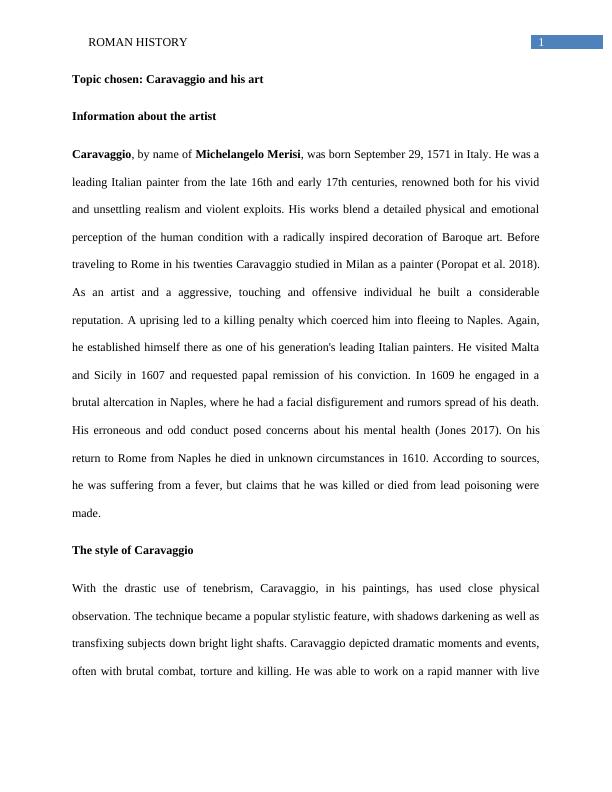Roman History - Caravaggio and His Art
Write a report on a subject of choice in the field of sculpture and architecture, discussing the technical and structural aspects of the chosen object.
7 Pages1941 Words18 Views
Added on 2022-09-07
Roman History - Caravaggio and His Art
Write a report on a subject of choice in the field of sculpture and architecture, discussing the technical and structural aspects of the chosen object.
Added on 2022-09-07
ShareRelated Documents
End of preview
Want to access all the pages? Upload your documents or become a member.
Article on Baroque Period Art
|5
|977
|332
Rembrandt van Rijn: Biography and Chronology
|4
|802
|21
Neo-classical and Romanticism
|7
|1143
|224
Creation of Adam - Renaissance Painting by Michelangelo
|4
|717
|422
AS405 History Of Western Civilization
|5
|1097
|154
Art History Presentation
|13
|1293
|157



